What To Look Out For - January 2016
This article may be the kiss of death for any snow this winter, but somewhere someone may read this with a magical snowfall outside…
Have you ever wondered which animals roam the fields, woods and even gardens which surround you and what dramas unfold after sunset? Many mammals live nocturnal lives and even those that are around in the daytime often have the ability to melt away into the cover of vegetation before we become aware of their presence. So the comings and goings of even the larger mammals are by and large a mystery to us. But there are no secrets in the snow, where the tell-tale tracks of animals can be read by anyone with an interest. One snowy day, following their prints, I followed a Red Fox, had lunch with a Badger, jumped a fence with a Roe Deer and patrolled a territory with an Otter!
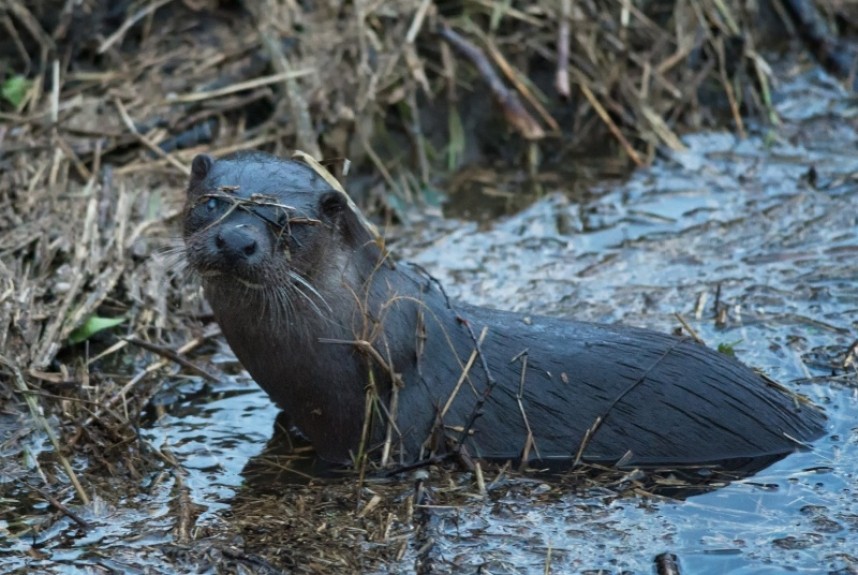
Otter © Tony McLean
Red Fox prints look relatively longer and slimmer, and show a wider gap between the impression of the front toes and heel than Domestic Dogs’ do. The easiest way to assess this is to imagine a line drawn across the leading edge of the outer (back) two toe pads (see photos). If the track is a dog’s the line will usually run through the back edge of the two central pads, but if it’s a fox’s it will lie behind them. The claw marks of a fox print are also more slender and pointed. Foxes move differently depending on the firmness of the ground, however, so that if the snow is partially frozen you will be able to pick out individual fore and hind prints, whereas in deep, soft snow they keep their bodies straighter, placing the hind print over the fore print like many other mammals to conserve energy.
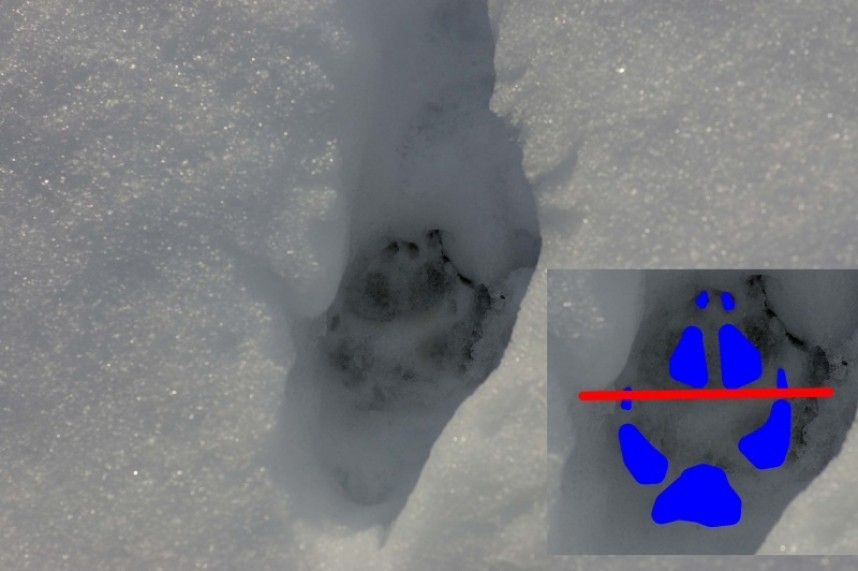
Red Fox track © Dan Lombard
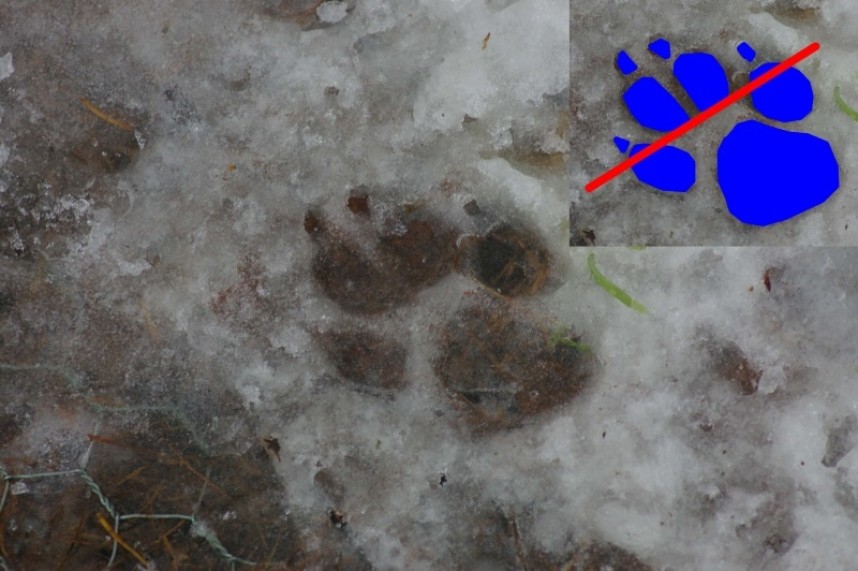
Dog track © Dan Lombard
Badgers are largely sedentary in cold weather so their prints are less often seen. Badger prints are unique in Britain, unless we have a miniature species of bear living in the countryside that I don’t know about. They have five toes on each foot but the inner toe is often missing from the print. The toe pads lie close together, more or less in a straight line and pointing forwards, and the claws are long, particularly on the fore feet.
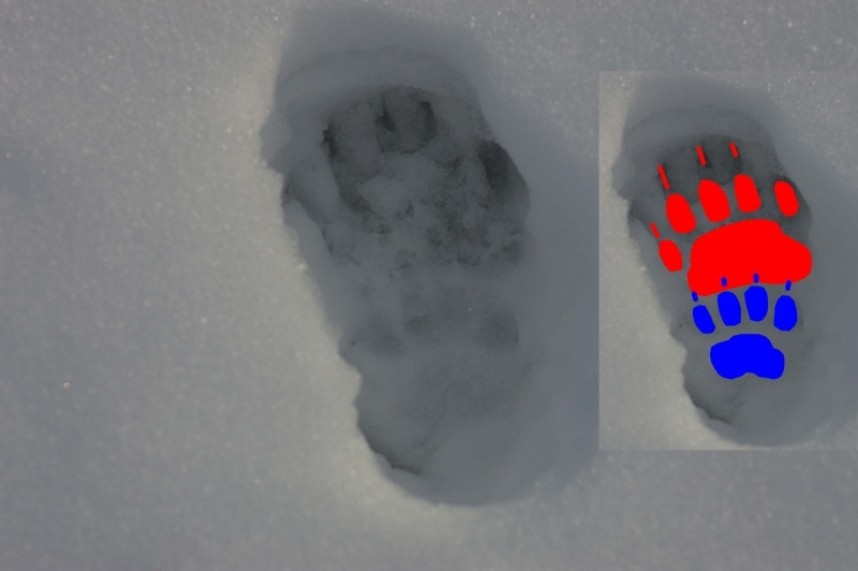
Badger track © Dan Lombard
By the local drain I found Otter tracks, always a treat to come across. The large print has five well-spaced toes, three central with the two outer set back slightly. Again the fifth toe sometimes doesn’t show on a print, but the webbing between the toes is usually clear. The prints of the fore feet are rounder than the hind and the claws are short. Near the prints you may find long smooth runs through the snow as otters like nothing more than sliding, particularly down banks into water.
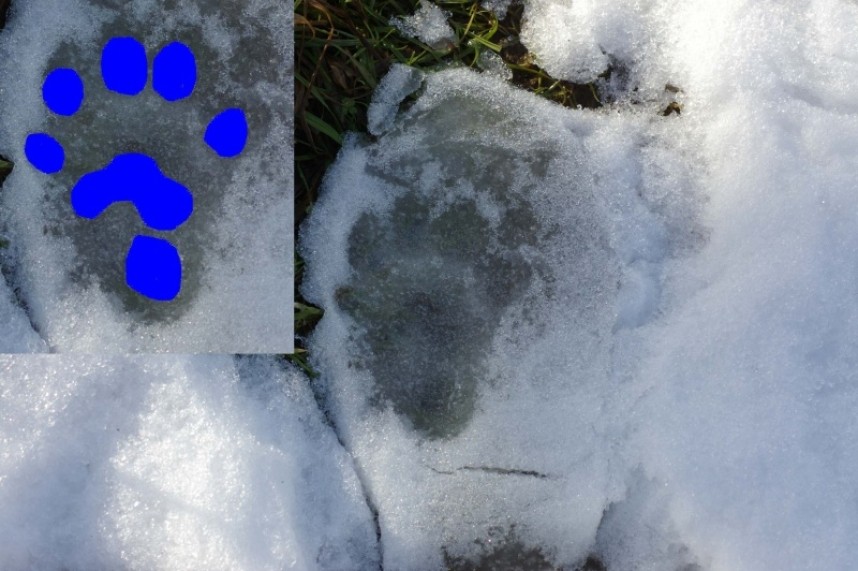
Otter track © Dan Lombard
Grey Squirrel tracks characteristically show the hind feet in front of the smaller fore feet, like rabbits, but unlike rabbits the fore prints lie side by side instead of one in front of the other. The tracks of red squirrel, though slightly smaller, are of course very similar, but this species doesn’t occur in East or North Yorkshire at the present time. Squirrel tracks may end abruptly where the animal has shinned up a tree or wall, which has given rise to rumours of ‘ghost squirrels’!
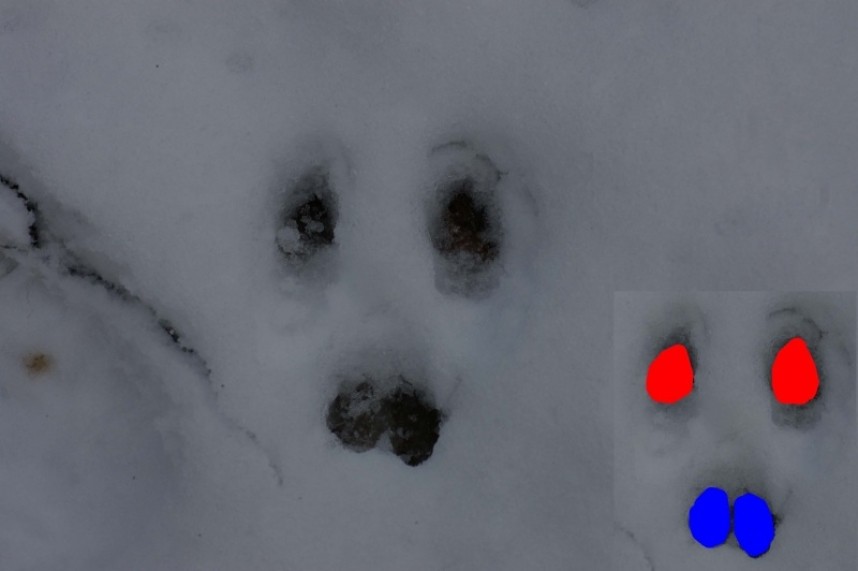
Squirrel track © Dan Lombard
Brown Hare tracks also show the larger hind feet in front of the fore. However, when running fast the prints of the hind feet may look smaller because only the toes are touching the ground. Hares have fur instead of pads but the impression may still look pad-like. Rabbit prints are smaller and narrower, with less space between the prints.
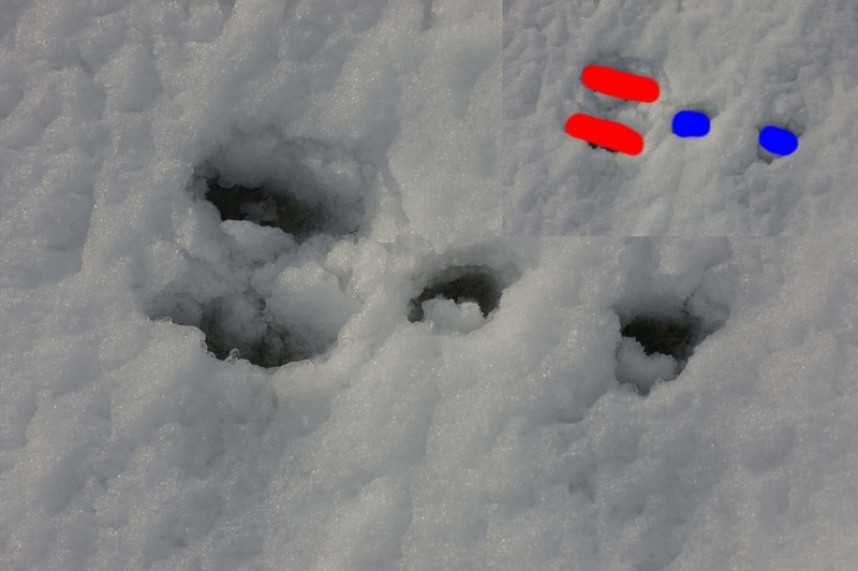
Rabbit track © Dan Lombard
Finally the cloven-hoofed Roe Deer shows a double print from the two middle of the four toes on each foot, which are known as cleaves. These are small, narrow and pointed. The fore feet make deeper prints than the hind feet and when moving quickly the cleaves splay out almost forming a V-shape. A key feature is that the foot pad extends across the entire base of the hoof, unlike other deer which have restricted pads, leading to an indentation towards the front of the cleaves. In snow or very soft mud the imprint of the dew claws can also be seen behind the cleaves.
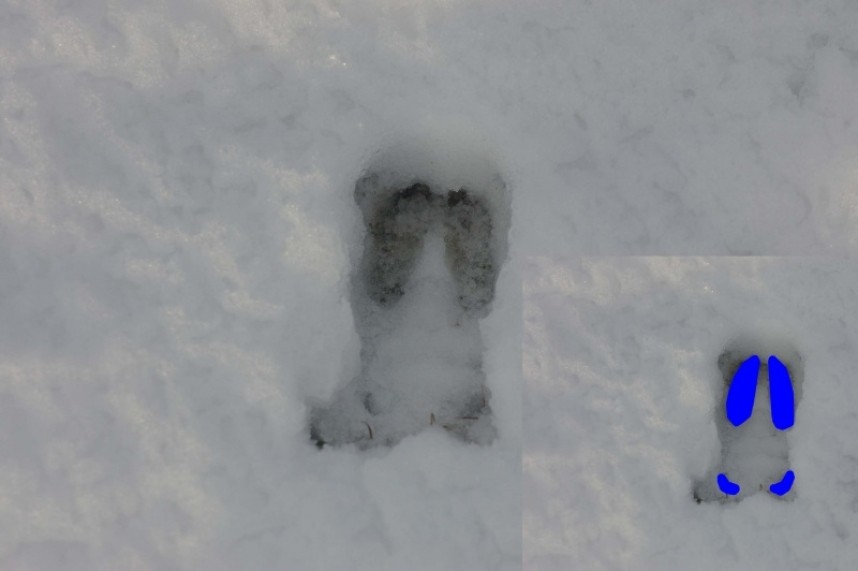
Roe Deer track © Dan Lombard
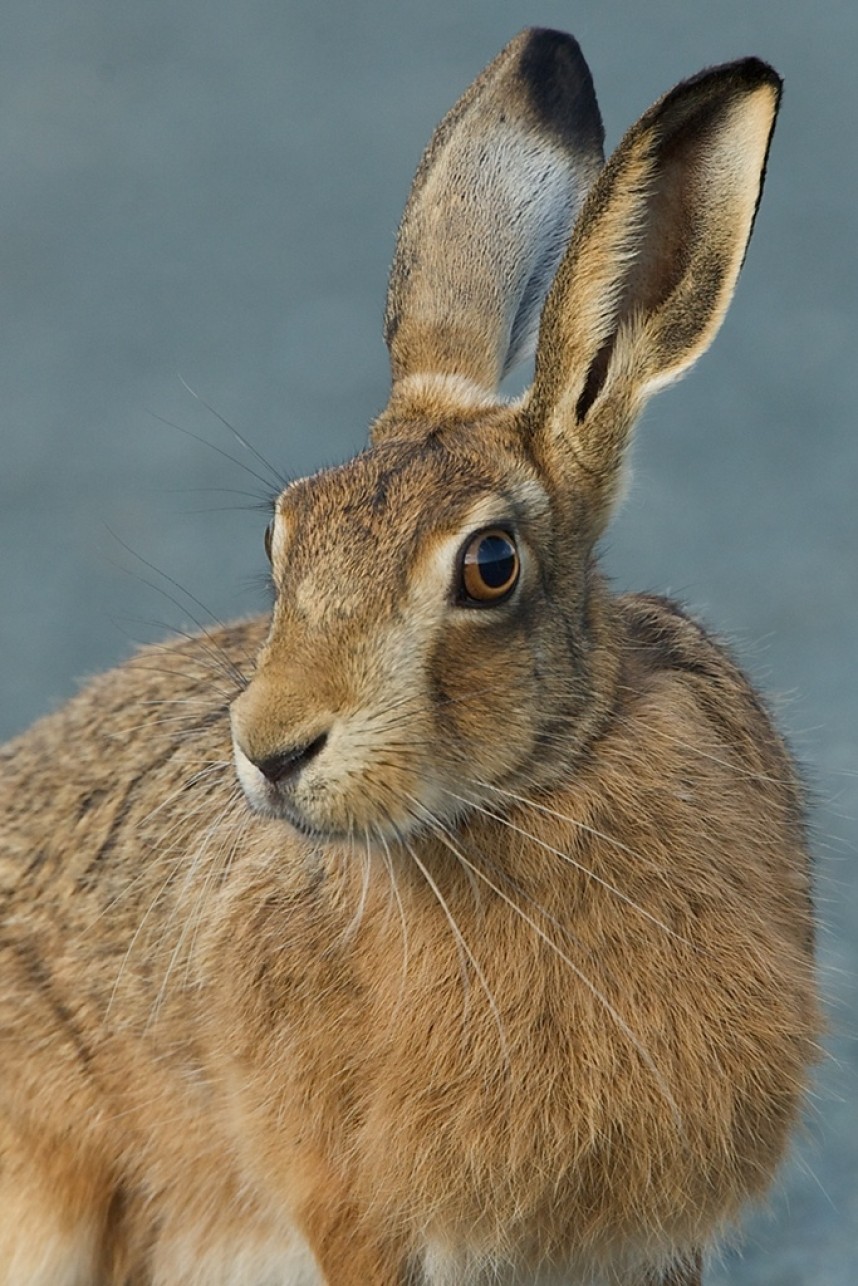
Brown Hare © Steve Race
Dan Lombard and Gaynor Chapman
All photos by Dan Lombard



 Back to Blog
Back to Blog
